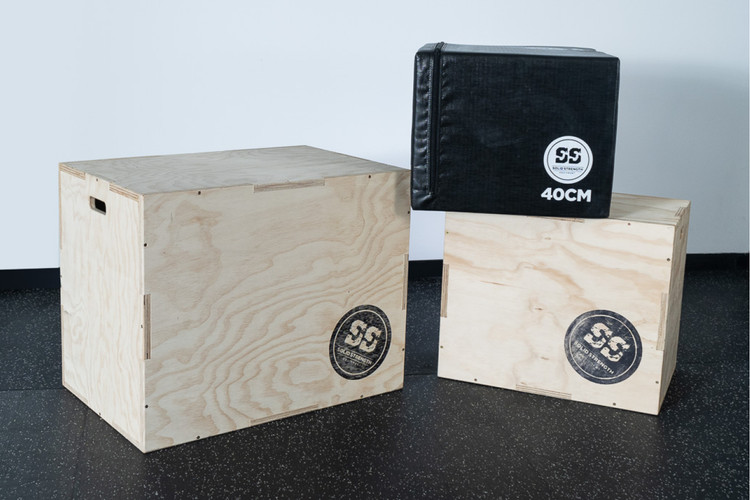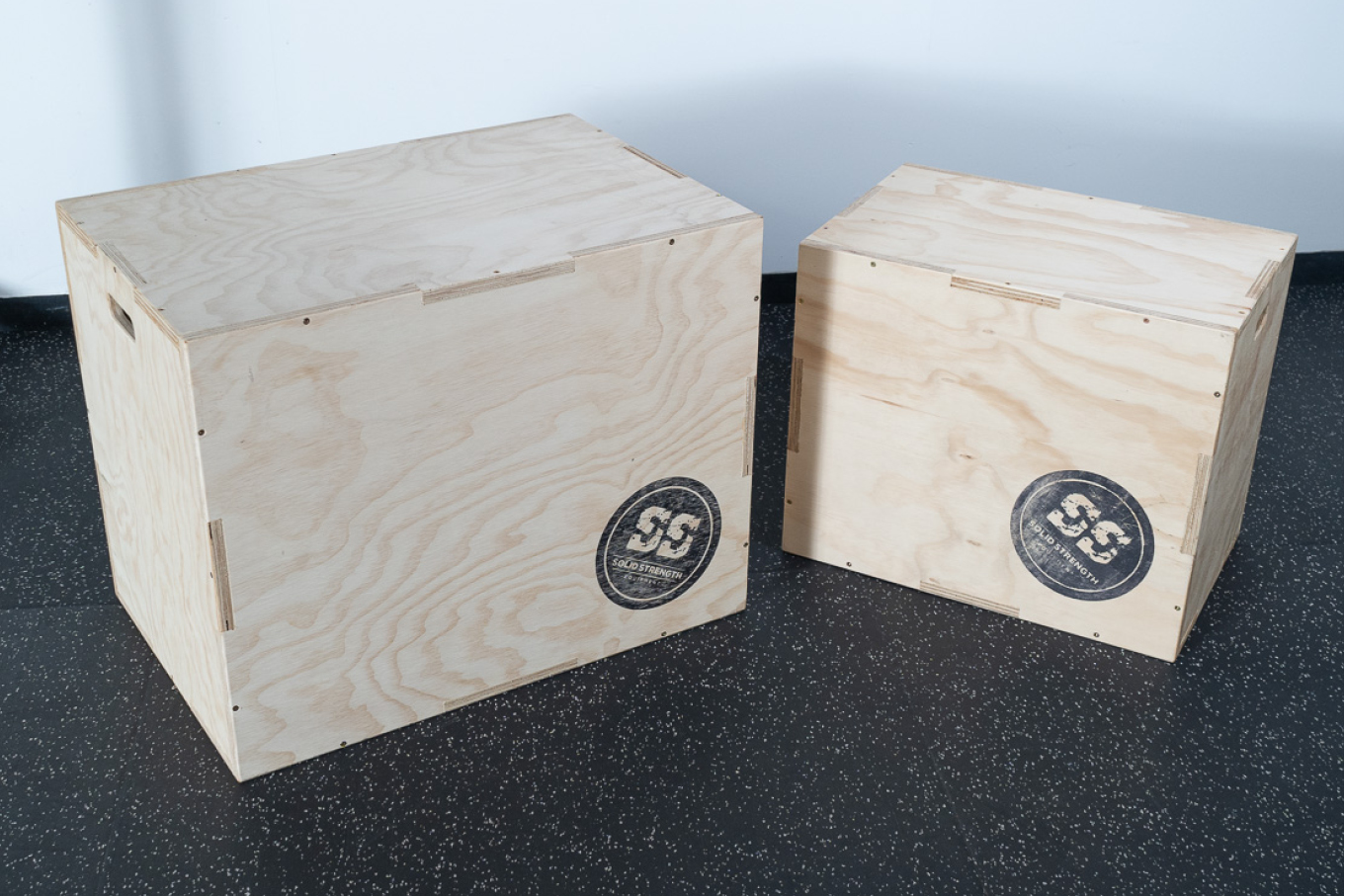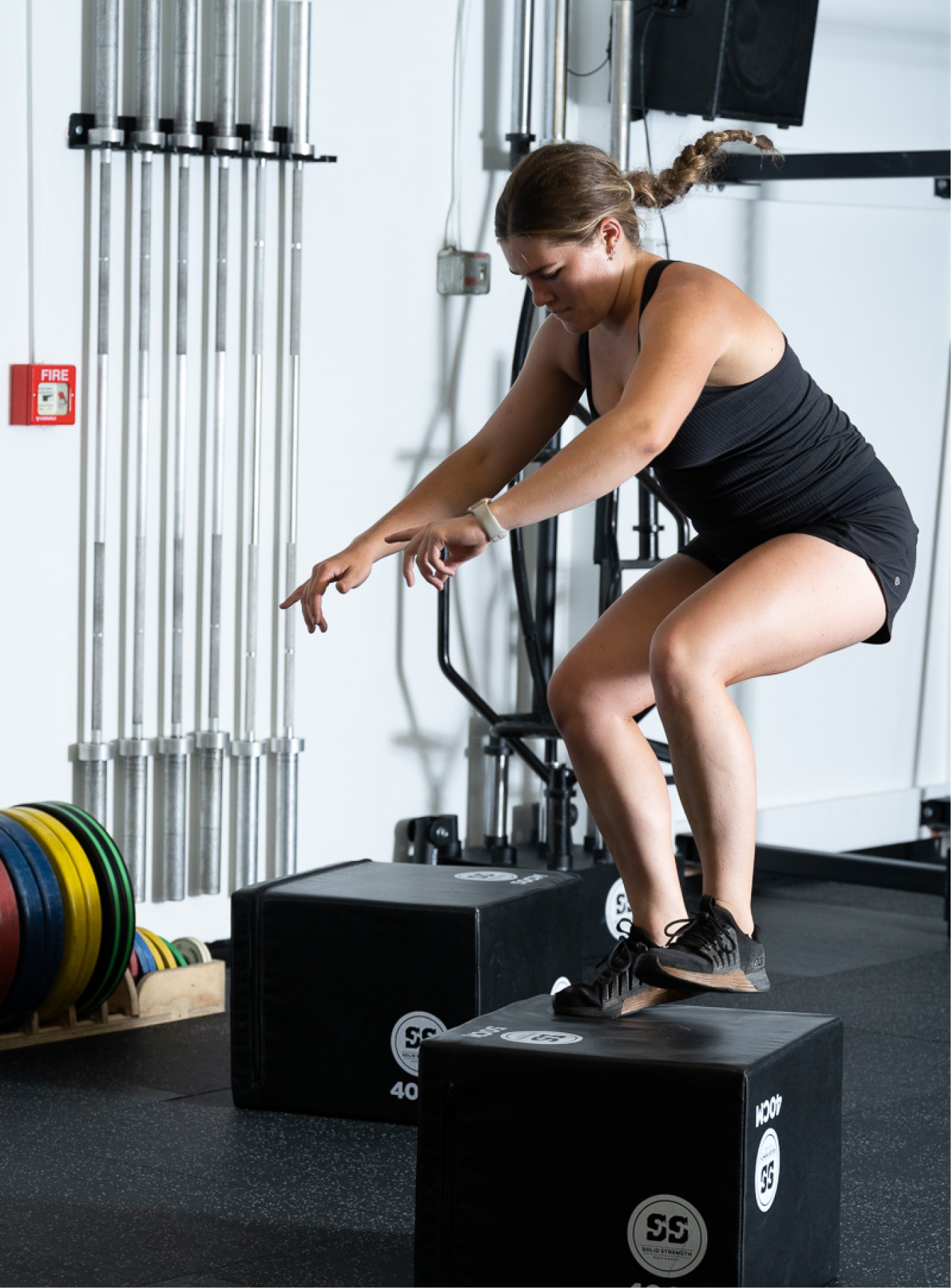HOW'D YOU GET THAT SCAR? PLYO BOXES — FOAM OR WOOD
Posted by Solid Strength Equipment on 29th Sep 2023
If you’ve ever gone to the gym regularly, chances are you’ve used a plyo box. Plyometric training — and especially box jumps, step-ups, and burpee variations — is a staple in many functional fitness programs. The majority of people will be familiar with wooden plyo boxes, and unfortunately many of us have the shin scars to prove it! In this blog, we’ll explore the pros and cons of wood vs. foam plyo boxes to help you make an informed decision and perhaps avoid earning a "battle scar" from your workout.
Benefits To Both
To start, let’s look at the benefits that wood and foam plyo boxes share. Both types of boxes will give you two or three different height options depending on the side you lay the box on. Our small wood plyo boxes have a 40cm, 50cm, and 60cm side. Our small foam plyo boxes have a 40cm and 50cm side, and both of our large wood and large foam boxes provide a 50cm, 60cm, and 75cm height option.
Another benefit of both types of plyo boxes is their durability. Even in a commercial gym space with high use, both wood and foam plyo boxes will last for years. In our CrossFit gym (CrossFit Birkenhead), we’ve been using the same wood plyo boxes for over a decade and the same foam plyo boxes for nine years. They’re all still going strong!
Regardless of whether you decide to purchase a wood or foam plyo box, you’re going to get a great workout in and have added a super versatile piece of equipment to your gym kit! Keep reading below for the pros and cons of each type of box to get a better idea of what might be the best option for you and your home or commercial gym.
Wooden Plyo Boxes
Pros —
Cost-Effectiveness: Wooden plyo boxes are generally cheaper, making them a budget-friendly option for both gym owners and home fitness enthusiasts.
Stability: Wood boxes offer great stability, even at their highest height, giving you a great platform for a lot of various exercises.
High Weight Capacity: Wood plyo boxes can take a lot of weight, so users of any size will feel safe and supported.
Made in New Zealand: Our wood plyo boxes are made right here in Aotearoa, and we think that’s a pretty good pro in and of itself!
Cons —
Injury Risk: The hard edges and corners on wood boxes means that even a slight misstep or incorrect jump can very easily lead to injuries.
Visible Wear: The untreated natural wood finish will show scuffs and footprints relatively quickly.
Foam Plyo Boxes
Pros —
Safety: Designed from soft surfaces, foam boxes substantially reduce the risk of severe injuries, offering a much safer option for plyometric training.
Great for Kids/Beginners: The added safety makes foam plyo boxes the perfect options for kids and beginner athletes. They offer a safe starting point for plyometric training.
Noise Reduction: The foam material absorbs sound better than wood, resulting in quieter workouts, which can be a benefit in shared or residential spaces.
Comfort: The softer surface of a foam box will be kinder on the joints during high impact exercises, such as box jumps, providing a softer landing surface.
Ease of Maintenance: Covered in a black PVC cover, foam boxes are easy to clean and maintain, just a simple wipe down is sufficient.
Higher Impact Resistance: Unlike wood boxes, foam plyo boxes can withstand the impact of dropping heavy equipment like kettlebells or dumbbells without breaking. In our gym we sometimes even use them as spotters for back squats!
Cons
Higher Initial Cost: Generally more expensive than wood boxes due to higher manufacturing and material costs.
Slight Instability at Maximum Height: At the maximum height of 75cm, foam boxes can be slightly unstable. The general feel of jumping onto a foam plyo box might take some getting used to, especially for those accustomed to only using wood boxes. The first few jumps can feel slightly less stable.
Making the Right Choice
Whether prioritising safety and comfort with a foam plyo box or opting for the cost-effective and durable wooden option, the choice largely depends on individual preferences and fitness goals. Another major decision making factor may be who’s going to use it most — kids and beginners will want a foam box while more experienced athletes may have the confidence to risk a shin scar or jump scare! Despite the differences, both wood and foam plyo boxes will make an awesome, versatile addition to any gym space.
Ready to add a plyo box to your home or commercial gym? Explore our range of foam and wood plyo boxes, designed with the Kiwi fitness enthusiast in mind. Visit our e-commerce website today and elevate your fitness regimen!




